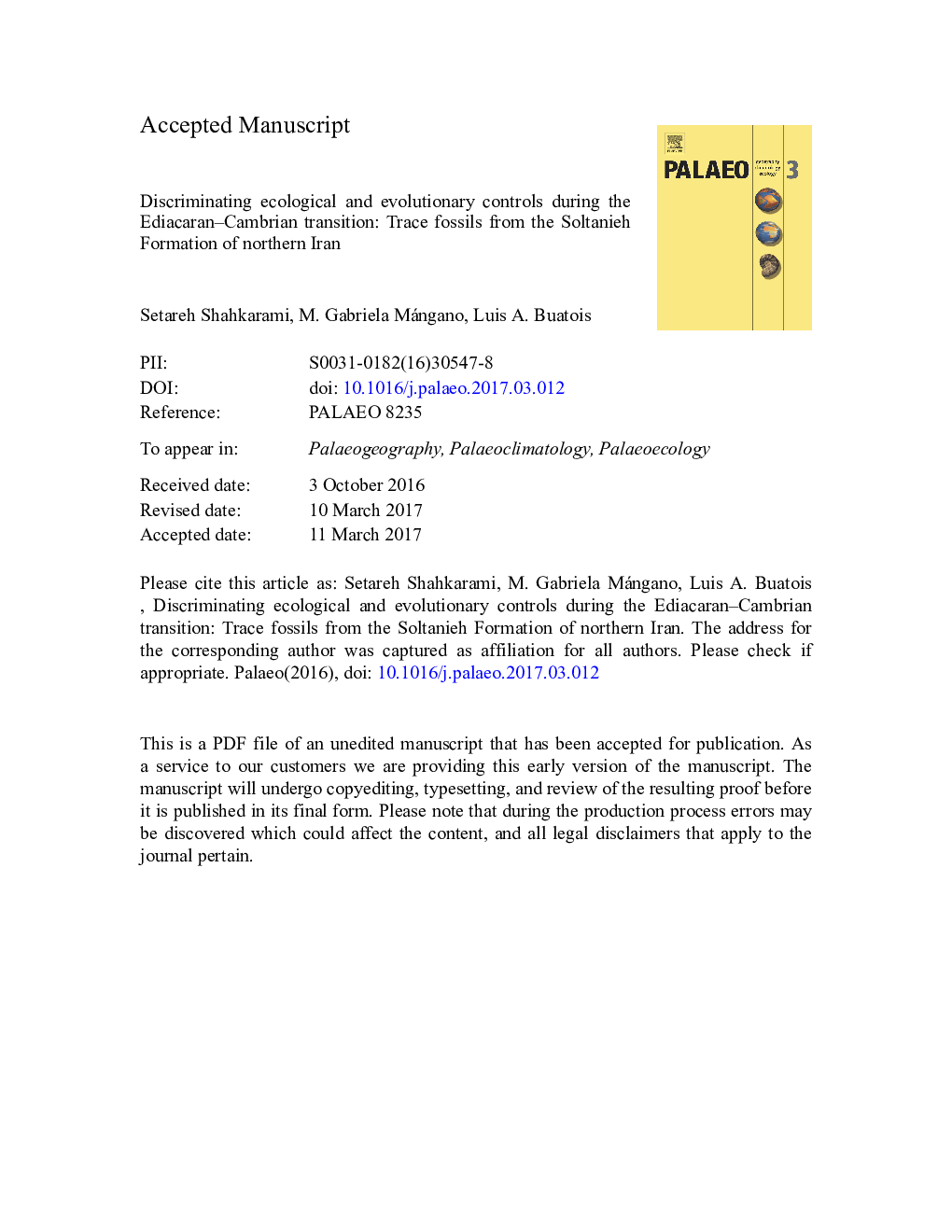| Article ID | Journal | Published Year | Pages | File Type |
|---|---|---|---|---|
| 5755882 | Palaeogeography, Palaeoclimatology, Palaeoecology | 2017 | 56 Pages |
Abstract
The nature of the Cambrian Explosion, one of the most critical events in Earth history, has been a major topic of discussion. The trend of increasing morphological complexity and taxonomic diversity of trace fossils within this interval has been used as evidence of the true evolutionary nature of the Cambrian Explosion. However, the distribution of trace fossils is controlled by a complex interplay between evolutionary and ecological constraints. The pre-trilobite Soltanieh Formation of northern Iran displays a significant vertical facies recurrence, allowing comparison of identical environments through time; therefore, its study provides a test case for evaluating the role of evolutionary and ecological controls on lower Cambrian trace-fossil distribution. An integrated study of sedimentary facies, small shelly fossil zones, sequence stratigraphy, and distribution of associated trace fossils indicates a complex interplay of these two sets of factors. The distribution and preservation of diagnostic early Cambrian trace fossils in the Lower Shale Member of the Soltanieh Formation is very likely to have been controlled by facies, especially within storm-generated siltstone-shale intercalations providing better preservation potential for interfacial trace fossils, therefore delaying the stratigraphic occurrence of Treptichnus pedum. In contrast, evolutionary innovations exerted the primary control on trace-fossil distribution in the Upper Shale Member, where the vertical distribution of trace fossils strongly matches that observed worldwide. This result suggests that, although trace fossils provide a valid means of global correlation, placing trace fossil assemblages within a paleoenvironmental and sequence-stratigraphic framework is a prerequisite of any sound evaluation of the evolutionary and biostratigraphic implications of trace fossils.
Related Topics
Physical Sciences and Engineering
Earth and Planetary Sciences
Earth-Surface Processes
Authors
Setareh Shahkarami, M. Gabriela Mángano, Luis A. Buatois,
